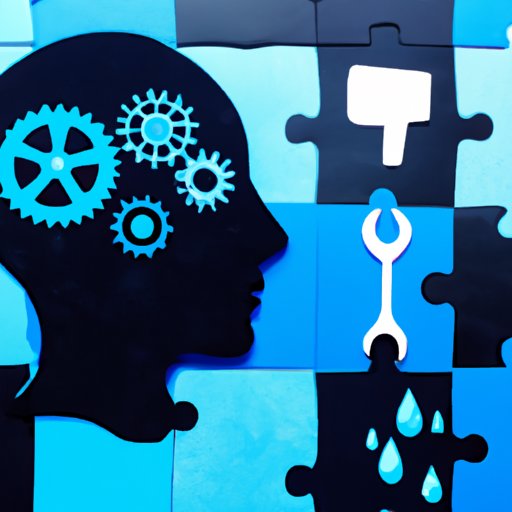
I. Introduction
Machine learning and artificial intelligence (AI) are popular buzzwords nowadays. They are often used interchangeably, but are they the same thing? What is the extent of their interdependence? This article aims to answer that question and provide a deeper understanding of these complex topics. It will also explore the pros and cons of machine learning as a form of AI, provide real-world examples of these technologies in action, discuss ethical concerns surrounding their use, and offer predictions for the future of these fields.
II. Understanding the Basics: Is Machine Learning AI?
The term “artificial intelligence” refers to machines that can learn and perform tasks that would require human intelligence to complete. Meanwhile, machine learning is a field of AI that allows systems to learn and improve from experience, without being explicitly programmed to do so. In other words, machine learning is a subset of AI.
Machine learning is the key driver of advancements in AI. It enables machines to recognize patterns within large datasets, make predictions based on previously-gathered data, and adapt to new environments. Machine learning is used in AI to help systems improve their accuracy and make better decisions.
One of the most well-known examples of AI powered by machine learning is Google’s AlphaGo. The system was able to defeat human world champions in the ancient Chinese game of Go by learning how to predict opponents’ moves and respond accordingly.
III. The Pros and Cons of Machine Learning as a Form of AI
Like any technology, machine learning has its upsides and downsides. Its benefits include increased efficiency, scalability, and accuracy. By using algorithms to analyze data and make decisions, machines can perform tasks faster and more accurately than humans. This makes them ideal for applications that require repetitive or complex tasks, such as image recognition, language translation, and fraud detection.
However, the drawbacks of machine learning cannot be overlooked. One potential issue is that the machine’s decisions are only as good as the data used to train it. If the data is biased, incomplete, or inaccurate, the machine is likely to make the wrong decision. Additionally, machines don’t have the capacity for empathy or ethics, meaning they may make decisions that would be considered unethical by human standards.
A well-known example of machine learning gone wrong is the ProPublica study on a risk assessment tool used in criminal justice. The study found that the tool was biased against African American defendants. Although the algorithm was designed to be race-neutral, it relied on factors that were indirectly related to race, such as zip code and education level, which resulted in unfair outcomes for certain groups of people.
IV. Examples of AI and Machine Learning in Our Daily Lives
AI and machine learning are increasingly present in our everyday lives, although we may not always be aware of it. They power everything from Siri and Alexa to personalized advertising and recommendations. Here are a few examples:
- Chatbots that provide customer service for businesses
- Recommendation systems on e-commerce websites like Amazon and Netflix
- Medical diagnosis and treatment planning based on machine learning analysis of patient data
- Automated fraud detection for financial institutions
V. How Machine Learning is Shaping the Future of AI
With ongoing advances in machine learning, it’s likely that AI will continue to evolve and become even more sophisticated. Some of the areas where machine learning is expected to shape the future of AI include:
- Autonomous vehicles
- Personalized healthcare
- Improved natural language processing and speech recognition
- Robots that can learn from human interactions
VI. The Ethics of AI and Machine Learning: What You Need to Know
As with any technology, there are ethical concerns that must be addressed when it comes to AI and machine learning. Some of the most pressing issues include:
- Privacy concerns related to the collection and use of personal data
- Ethical issues related to the use of autonomous weapons
- The risk of creating machines with unintended consequences
- The potential for machines to exacerbate existing social and economic inequalities
It’s important that we carefully consider these issues as we continue to develop and implement AI and machine learning systems.
VII. Breaking Down the Jargon: What’s the Difference Between AI and Machine Learning?
Although AI and machine learning are often used interchangeably, it’s important to understand the difference between the two. As mentioned earlier, machine learning is a subset of AI. AI encompasses a wider range of technologies that use algorithms to perform tasks that would normally require human intelligence. This can include everything from rule-based systems to neural networks and deep learning algorithms.
Machine learning, on the other hand, is a type of AI that allows systems to learn and improve from experience, without being explicitly programmed to do so. This makes it an essential component of many AI systems.
VIII. Where is AI and Machine Learning Headed? Predictions for the Future
As the fields of AI and machine learning continue to develop, it’s clear that they will have a significant impact on our lives in the years to come. Some experts predict that AI will become ubiquitous within the next decade, with machines taking over an increasing number of jobs and tasks.
However, there are also concerns about the ethical implications of such widespread use of AI. It’s important that we carefully consider these issues as we continue to invest in and develop these technologies.
IX. Conclusion
AI and machine learning are complex and rapidly-evolving fields that are already having a significant impact on our lives. While they offer many benefits, they also come with ethical concerns that must be addressed. As we continue to develop and utilize these technologies, we must do so carefully and thoughtfully.





